Who were the people accused the in Nuremberg Trials?
Martin Bormann
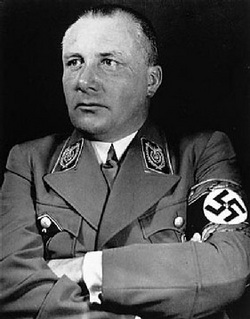
Martin Bormann was Deputy Fuhrer. He was born on June 17, 1900 in Halberstadt. He was the private secretary of Hitler. He was second to Hitler in terms of political power. Martin Bormann was in charge of almost everything that Hitler did. He helped to pass legislation and get more people to join the the Hitler Youth Groups.
Karl Doenitz
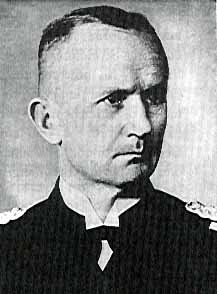
Karl Doenitz was the Deputy Fuhrer. He was born on September 16, 1891 in Berlin-Grenau. He enlisted as a sea cadet in 1910 and served in World War I. He remained in the army and was put in charge of the new U-boats that were being developed. In 1943 he was appointed as Commander in Chief of the Germany Navy. He was able to use his improved U-boats during the war. He was given permission to build them in 1944 but it had little impact on the outcome of World War II because it was too late. Hitler appointed Doenitz as head of state after he committed suicide.
Hans Frank
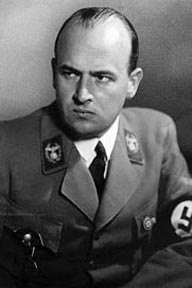
Hans Frank as the Supreme Commander of the Navy and German Chancellor. He was born in Karlsruhe, Germany on May 23, 1900. He joined the German Army in 1917 and the German Worker's Party in 1919 and took part in the Beer Hall Putsch. He studied law and became Hitler's legal adviser. When Hitler became Chancellor he appointed Frank as Minister of Justice in Bavaria. He left the party after he did not like what was going on with the illegal killings in Dachau. He returned to the Party and Hitler appointed him director of the headquarters legal department for the Nazi Party. He won an election to the German parliament. It was his job to research Hitler's ancestry to get rid of all the rumors that Hitler had Jewish blood. He reformed the Nazi state legal system. He became president of the German Academy of Law and Chief of Administration to Gerd von Rundstedt and Governor-General of the General Government for the occupied territories of Poland all in the same year of 1939.
Wilhelm Frick
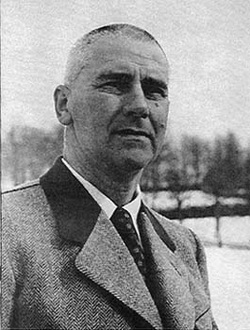
Wilhelm Frick was the Foreign Minister of the Interior. He was born in 1877 in Germany. He became a police officer in Munich and joined the National Socialist German Workers Party and took part in the Beer Hall Putsch. He was imprisoned for his part in it. When he was appointed Minister of the Interior he was in charge of operating the Enabling Act and he helped draft the Nuremberg Laws , which began the killing of Jews in Germany. He lost his job in 1943 because of a dispute between Heinrich Himmler and Schutzstaffel. After that Hitler appointed him as the Protector of Bohemia and Moravia. He held that position until the end of the Second World War.
Hans Fritzsche
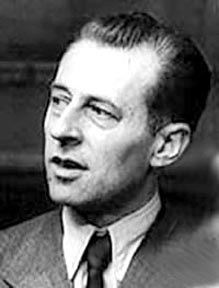
Hans Fritzsche was the head of the Radio Diviosn of the Propaganda Ministry. He was born in 1900 in Bochum, Westphalia. He served in the German Army during World War I. After the war he went to university and studied liberal arts. He left and became the head of the Wireless News Department and joined the Nazi Party. Fritzsceh was appointed chief of the Home Press Division in December of 1938. During World War II he became chief of the Propaganda Ministry's Radio Division. This was very important to Hitler to get support so he could continue with the war and not be turned against.
Walther Funk
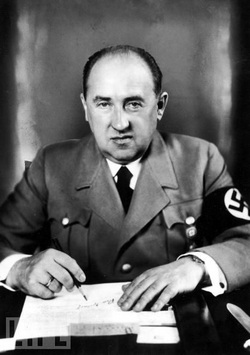
Walther Funk was the President of the Reichsbank. He was born on August 18, 1890 in Trakehnen, Germany. He studied economics and became a financial journalist. He joined the National Socialist German Workers Party in 1931. Hitler appointed him as Minister of Economics in 1937 and after two years he became President of the Reichsbank. He worked with Heinrich Himmler to deposit the money that was taken from the Jewish community.
Hermann Goering
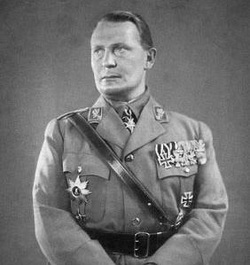
Hermann Goering was Reich Marshal. He was born on January 12, 1893 in Rosenheim. He entered the army in 1914 and was transferred into the air force as a pilot where he distinguished himself from the others. He took part in the Beer Hall Putsch and was seriously wounded as a result. He played a large role in Hitler's rise to power. March 1, 1935, he was appointed Commander in Chief of the Air Force. He was responsible for the rapid build up of the air-crafts and training pilots. He helped with bringing about Anschluss in 1938 and many other large actions taken during the war by Hitler. He fully dedicated himself to Operation Eagle, the invasion of Britain. This would eventually lead to his downfall.
Rudolf Hess
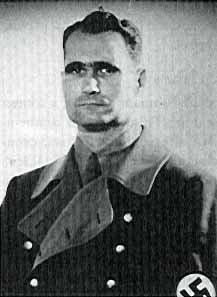
Rudolf Hess was deputy to the Fuhrer. Born in Alexandria, Egypt on April 26, 1894 he was sent to Germany and educated at Godesberg. He joined the German Army in 1914 and served in World War I. After that he went on to study history and economics at university. He was one of the first members of the National Socialist German Workers Party so he took part in the Beer Hall Putsch. He was very loyal to Hitler but never had a great influence on the decisions that were made.
Alfred Jodl
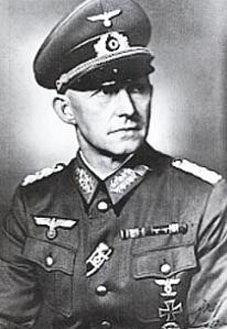
Alfred Jodl was chief of the Operations Staff of the Armed Forces. Alfred Jodl was born on May 10, 1890 in Wuerzburg, Germany. He attended cadet school and joined a field military regiment in the German army in 1910. He was promoted to General Major in 1935. He was sent to Vienna as head of the 4th Artillery Command after Anschluss. In September he returned to Germany and took part in the invasion of Poland. In 1939 he was appointed Chief of Operations and worked closely with Hitler. He directed all military campaigns and helped with planning and authorizing the brutal methods that the German armed forces used during the war.
Ernst Kaltenbrunner
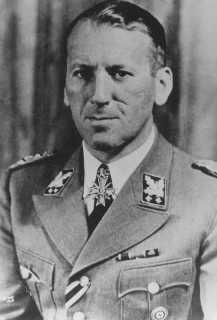
Ernst Kaltenbrunner was chief of Secuity Police, SD and RSHA. He was one of the most feared henchmen in Nazi Germany. Ernest Kaltenbrunner was born in Ried-im-Innkreis, Austria on October 4, 1903. He studied law at Graz University. He joined the Austrian Nazi party in 1932 and became a devoted follower of Hitler. Ernest Kaltenbrunner worked closely with Arthur Seyss-Inquart and Adolf Eichmann and by 1933 he was a district speaker and legal counselor to the SS in Austria. From this he gained a reputation for effective leadership and soon became the head of the Austrian Nazi Party, SS division VIII.
Wilhelm Keitel
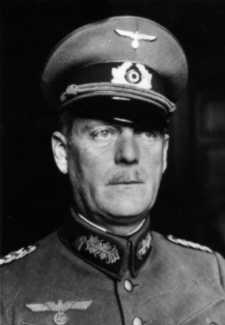
Wilhelm Keitel was chief of the High Command of the Armed Forces. He was born near Hanover on September 22, 1882. In 1901 he joined the army and became a cadet officer. Eight years later he got married. In 1915 he became a member of the German general staff. After World War I ended he taught for two years in Hanover Cavalry School and was transferred in 1924 to Reich Defense Ministry where he served in the troop office and became the head of the department. In 1937 he became full general and by 1938 he was the head of Supreme Command of the Armed Forces. Wilhelm Keitel played an important role in the planning of the invasion of Poland. Due to the invasions success he was promoted to Field Marshall in 1940. He advised Hitler not to invade Russia but when it was successful he looked really bad and offered to resign but it was refused.
Konstantin von Neurath
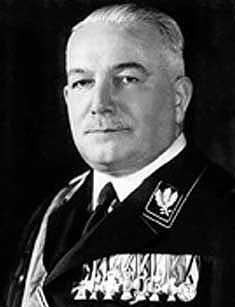
Konstantin von Neurath was Minister of Foreign Affairs and Reich Protector of Bohemia and Moravia. He was born on February 2, 1873 in Klen-Glattbach, Germany. He joined the Germany Army in WWI. After the war von Neurath served as minister to Denmark and ambassador to Italy. In 1939 Hitler appointed him as protector of Czechoslovakia. He was responsible for closing all of the universities in Czechoslovakia after students protested against Nazi rule and had nine students killed for rebelling. Hitler did not think that von Neurath responded harshly enough so he was replaced with Reinhard Heydrich. He was captured by Allied troops at the end of WWII.
Franz von Papen
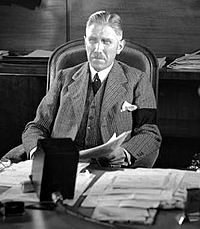
Franz con Papen was Chancellor in 1932. He was born in Werl, Germany on October 29, 1879. He joined the German Army and was a general staff officer when World War I broke out. He came to America but was forced to leave when he was accused of attempting to sabotage American armaments production for the Allies. In 1921 he was elected to the Reichstag. He had few followers so it was a shock when he was appointed chancellor on May 31, 1932.
Erich Raeder
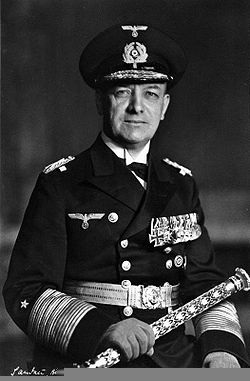
Erich Raeder was Supreme Commander of the Navy from 1928 to 1943. He was born on April 24, 1876 in Wandsbek, Schleswig-Halstein. He entered the Imperial Navy in 1894 after the usual education that a child got during that time. He became Chief of Staff to Franz von Hipper in 1912 and was later promoted to admiral and head of the German Navy in 1928. He was for restoring Germany as a great power. His strategy to achieve this is to build the Navy so they could challenge the British Navy. He took part in some major battles during World War II.
Joachim von Ribbentrop
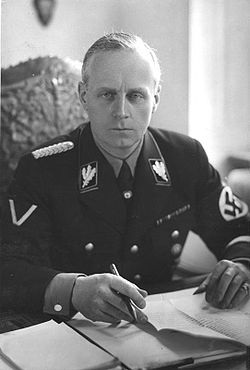
Joachim von Ribbentrop was Reich Foreign Minister. He was born on April 30, 1893 in Wesel, Germany. He got his education at a boarding school in Switzerland. First he worked as a clerk with a German importing base in London and then he moved to Canada and worked as a timekeeper for construction that was going on. After that he was employed as a journalist in New York city and Boston. He joined the German Army after the outbreak of World War I. He joined the National Socialist German Workers Party in 1932 and in 1933 he became Hitler's foreign affairs adviser. Ribbentrop was the ambassador to London in August 1936 and his job was to persuade Britain to get involved with the territorial disputes and to work against communism. On February 4, 1938 he was appointed Germany's foreign minister.
Alfred Rosenberg
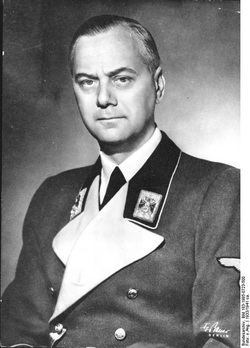
Alfred Rosenberg was the party philosopher and Reich Minister of the Eastern Occupied Area. Rosenberg was born in Russia on January 12, 1893. When he was studying architecture at the Riga Technical Institute he joined a pro-German student group. This was the beginning of his involvement with Germany and Hitler. He later joined the National Socialist German Workers Party and became the editor of the party newspaper. While Hitler was in jail, Rosenberg said he had visited him often and helped write Mein Kampf. He was elected to the Reichstag and after the success of Operation Barbarossa he became minister for eastern territories.
Fritz Sauckel
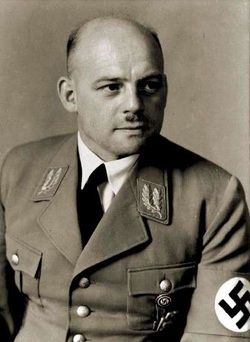
He was plenipotentiary for Labor Allocation. Fritz Sauckel was born was born on October 27, 1894 at Hassfurt am Main. He joined the Nazi Party in it's early years. He became governor in 1933 and held the highest rank in the Storm Troopers and the SS. He was in charge of mobilizing workers for military purposes. Millions of workers were deported from their homes to work in Germany industry.
Hjalmar Schacht
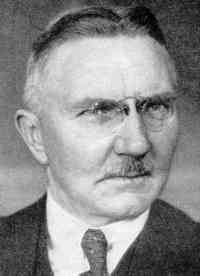
He was Minister of Economics and PResiden fot he Reichsbank from 1933 to 1939. Hjalmar Schacht was born in Germany on January 22, 1877. He became the Reich currency commissioner. After reading Hitler's Mein Kampf he converted to fascism. Hitler appointed Schacht as minister of economics. He helped come up with the New Plan in order to get more raw materials for Germans to use during the war. He was in control of all of the trading and prices for the Nazi empire.
Baldur von Schirach
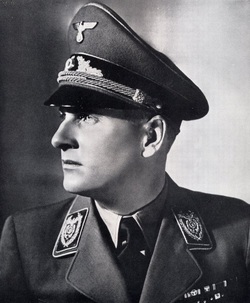
He was the Fuhrer of the Hitler Youth. Baldur von Schirach was born on March 9, 1907 in Berlin. He joined the Nazi Party in 1924, becoming one of the earliest members. For a short time he studied German folklore and art history at the University of Munich. He became a major organizer of student organizations for the Nazi Party. In 1929 he was appointed to leader of the National Socialist German Students League and later she was appointed Reich Youth Leader of the NSDAP. Baldur von Schirach organized the huge youth march in Potsdam. He married the daughter of Hitler's official photographer, Henriette Hoffmann. During the war he resigned from his position and joined the forces in fighting in France.
Arthur Seyss-Inquart
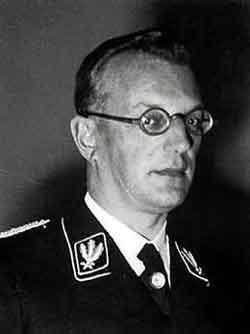
He was Minister of the Interior and Reich Governor of Austria. Arthur Seyss-Inquart was born on July 22, 1892 in Stannern, Austria. Prior to joining the Austro-Hungarian Army during World War I he studied law. During the Nazi Party's rise to power, he was appointed minister and served as chancellor for Anschluss. During the World War II he was governor of Ostmark for a time and he served as deputy governor under Hans Frank in occupied Poland. His highest ranking position was Reich Commissioner of the Netherlands.
Albert Speer
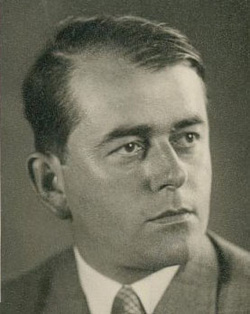
He was the Minister of Armaments and War Production. Albert Speer, born in Mannheim, Germany, was educated in architectural studies. He joined the National Socialist Party in January 1931 and became close with Hitler. He designed monuments and decorations and other events to promote the Nazis. In 1942 he was appointed to Minister of Armaments was later appointed Inspector General of the Reich and he constructed the Reich Chancellery in Berlin and the Party palace in Nuremberg. In 1942 he was appointed Minister of Armaments and War Production and became am important person in planning the German war economy. He was able to increase production dramatically. Speer was able to do this by using prisoners of war and civilian slave labors to work in the factories.
Julius Streicher
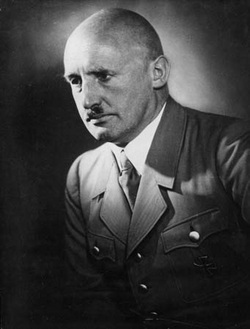
Julius Streicher was born on February 12, 1885 in Fleinhausen. He was an elementary school teacher. When World War I began he enlisted in the army and became highly decorated. In 1923 he established Der Sturmer (The Stormtrooper), an antisemitic newspaper. His newspaper became a great success as Hitler rose to power.
